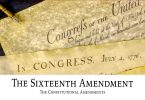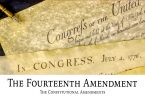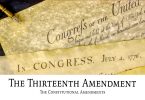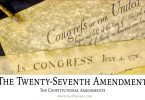This amendment is the one that explains how the succession to the presidency works, and what happens in the case that an incumbent president becomes disabled while in office such that he can no longer perform the duties of the office. The amendment was approved by Congress in July of 1965, and adopted to the US Constitution on February 10, 1967, after the requisite 3/4 of the states had approved it.
What Does it Say?
“Section 1. In case of the removal of the President from office or of his death or resignation, the Vice President shall become President.
Section 2. Whenever there is a vacancy in the office of the Vice President, the President shall nominate a Vice President who shall take office upon confirmation by a majority vote of both Houses of Congress.
Section 3. Whenever the President transmits to the President pro tempore of the Senate and the Speaker of the House of Representatives his written declaration that he is unable to discharge the powers and duties of his office, and until he transmits to them a written declaration to the contrary, such powers and duties shall be discharged by the Vice President as Acting President.
Section 4. Whenever the Vice President and a majority of either the principal officers of the executive departments or of such other body as Congress may by law provide, transmit to the President pro tempore of the Senate and the Speaker of the House of Representatives their written declaration that the President is unable to discharge the powers and duties of his office, the Vice President shall immediately assume the powers and duties of the office as Acting President.
Thereafter, when the President transmits to the President pro tempore of the Senate and the Speaker of the House of Representatives his written declaration that no inability exists, he shall resume the powers and duties of his office unless the Vice President and a majority of either the principal officers of the executive department or of such other body as Congress may by law provide, transmit within four days to the President pro tempore of the Senate and the Speaker of the House of Representatives their written declaration that the President is unable to discharge the powers and duties of his office. Thereupon Congress shall decide the issue, assembling within forty-eight hours for that purpose if not in session. If the Congress, within twenty-one days after receipt of the latter written declaration, or, if Congress is not in session, within twenty-one days after Congress is required to assemble, determines by two-thirds vote of both Houses that the President is unable to discharge the powers and duties of his office, the Vice President shall continue to discharge the same as Acting President; otherwise, the President shall resume the powers and duties of his office.”
What Does it Mean?
The first part of this amendment clarifies that the Vice-President does, in fact, become President if the President dies in office. Before this amendment, this succession line had just been an assumption, rather than a Constitutional rule, and the Vice-President would have been referred to as Acting President, rather than President.
The second section tells how the vacant vice-presidential position is to be filled if the Vice-President becomes the president under the circumstances of the first section. Before this amendment, the vice-presidential office would simply be vacant until the next election. With this amendment, there is an appointment process established for a new Vice-President.
The third section allows for presidential authority and power to be voluntarily transferred to the Vice-President if the President declares in writing that he is unable to perform the duties and responsibilities of his office. This has been used before when Presidents have undergone medical procedures and is meant to be a temporary transfer of power between the two officials. The President stays President and gets his authority back when he declares in writing that he is able to perform the office once more.
The fourth and final section of this amendment deals with what to do with a President who is unable to perform the roles of the office, but cannot or will not declare so in writing. If this were to happen, the Vice-President, along with the majority of the cabinet members, must declare in writing that the President is unable to perform the roles of the office. Once this declaration is written and sent to Congress, the Vice-President becomes Acting President, with the President still in office, but with no power or authority.






